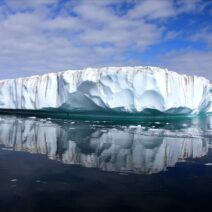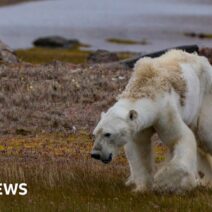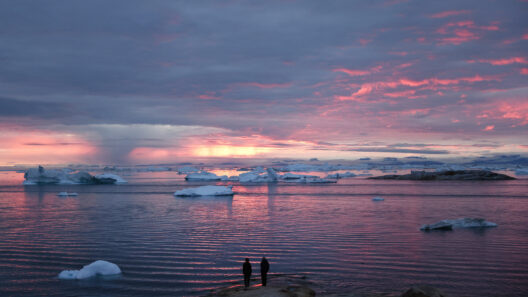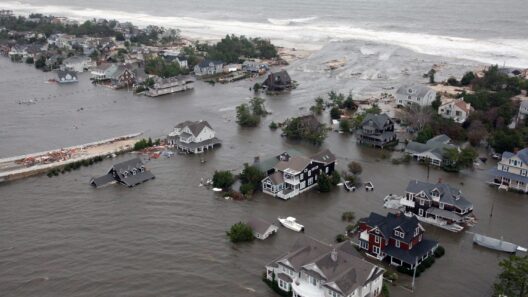The relentless march of climate change has brought us to the precipice of a daunting reality: rising sea levels. This phenomenon, primarily fueled by the melting of polar ice caps and thermal expansion of seawater, poses a grave threat to coastal areas worldwide. As we delve deeper into this precarious situation, one might playfully wonder: What if the ocean finally decided it had had enough of us? The answer, however, is anything but amusing.
To understand the breadth and depth of the consequences stemming from rising sea levels, we must dissect the various facets: inundation, erosion, biodiversity loss, and socio-economic impact. Each of these elements intertwines with the others, creating a complex web of challenges that communities across the globe must confront.
Devastating Inundation: A Tale of Cities at Risk
Inundation is the most immediate consequence of rising sea levels. Coastal cities such as Miami, New Orleans, and Jakarta are already experiencing heightened flooding. The combination of storm surges and high tides results in chronic flooding, which is projected to worsen. It is no longer an isolated incident; these cities are facing perennial risks. Imagine waking up to find parts of your neighborhood have become a part of the ocean—what would that feel like?
This inundation leads to the displacement of populations and disruption of local economies. Historical landmarks, homes, and comforting local establishments are at risk of being swallowed by the sea. In a cruel twist of fate, those living in low-income areas are often the first to bear the burden, as they lack the resources to relocate or fortify their homes against the encroaching waters.
Erosion: The Silent Thief
Erosion may not scream for attention, but it unequivocally deserves it. As sea levels rise, the natural barriers that protect coastal regions begin to erode. Beaches and dunes, once a bastion against the ocean’s onslaught, can deteriorate rapidly. This process not only threatens properties directly along the shoreline but also disrupts ecosystems that rely on these areas for their survival.
The retreating coastline has implications for wildlife, particularly for species reliant on coastal habitats for nesting and feeding. Sea turtles and seabirds, for example, find their nesting sites increasingly compromised. With the loss of habitat comes a reduction in biodiversity, setting off a chain reaction that impacts the ecological balance.
Impact on Coastal Biodiversity: A Challenging Ecosystem
As the ocean encroaches, coastal ecosystems experience a profound transformation. Mangroves, coral reefs, and salt marshes provide crucial habitat and coastal protection, but they are under siege. Rising salinity levels, as seawater infiltrates freshwater systems, threaten the delicate flora and fauna that call these regions home.
Coral reefs, often dubbed the rainforests of the sea, are particularly vulnerable. Higher sea temperatures and acidic conditions, exacerbated by climate change, lead to coral bleaching and increased mortality rates. The cascading effects are catastrophic, not just for marine life, but also for communities that rely on fishing and tourism.
The reduction in biodiversity weakens the resilience of these ecosystems, making them less capable of adapting to changing conditions. As we ponder these changes, we must ask: What species might we lose forever if we continue down this path?
Socio-Economic Consequences: A Ripple Effect
The socio-economic ramifications of rising sea levels are staggering. Property values in coastal areas are dropping as buyers become increasingly aware of flood risks. The insurance industry is feeling the tremors as well, with policies becoming prohibitively expensive or even unavailable in high-risk zones. Municipalities face unprecedented challenges in maintaining infrastructure, leading to increased taxes or cuts to critical services.
This economic pressure often translates into a humanitarian crisis. Communities may face an influx of climate refugees—individuals forced to leave their homes due to rising waters. The socio-political landscape may shift as governments struggle to manage the resettlement and welfare of displaced populations. How will governments respond when the number of climate refugees swells beyond current thresholds?
Preparing for the Inevitable: Adaptation Strategies
Addressing the multifaceted challenges posed by rising sea levels requires a concerted effort at local, national, and global levels. Innovative adaptation strategies must be implemented—ranging from building resilient infrastructure to restoring natural barriers. Many coastal cities are exploring the concept of “managed retreat,” where communities may need to relocate to safer grounds.
Moreover, protecting and restoring mangroves and wetlands not only provides habitat but also serves as a barrier against storm surges. National policies must reflect awareness of these urgent needs, fostering sustainable development while preserving vital coastal ecosystems. The question looms large: Are we prepared to make the tough decisions now to ensure a livable planet for future generations?
In conclusion, the phenomenon of rising sea levels is not a distant threat; it is a pressing crisis that requires our immediate attention. From inundation to erosion, biodiversity loss to socio-economic challenges, the impacts are profound and far-reaching. As we navigate this precarious terrain, the time for proactive strategies and community engagement is now. The choices we make today will dictate the legacies we leave behind for those who come after us.








